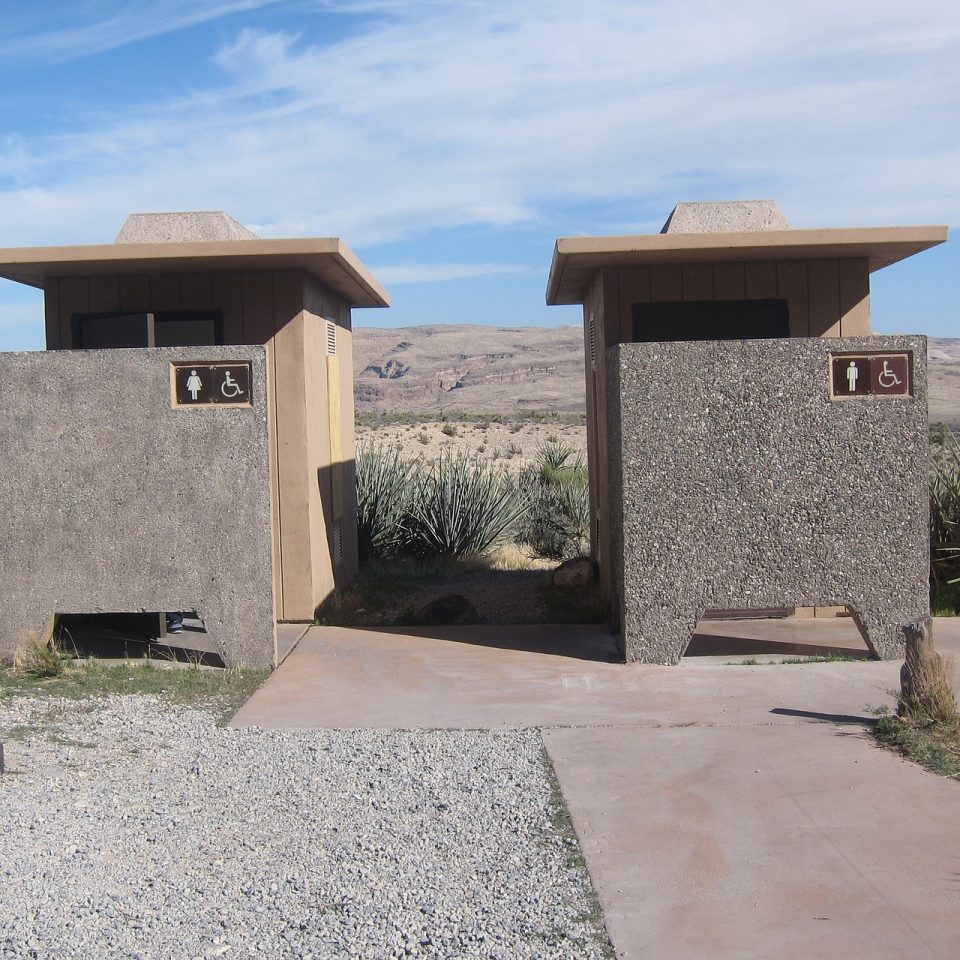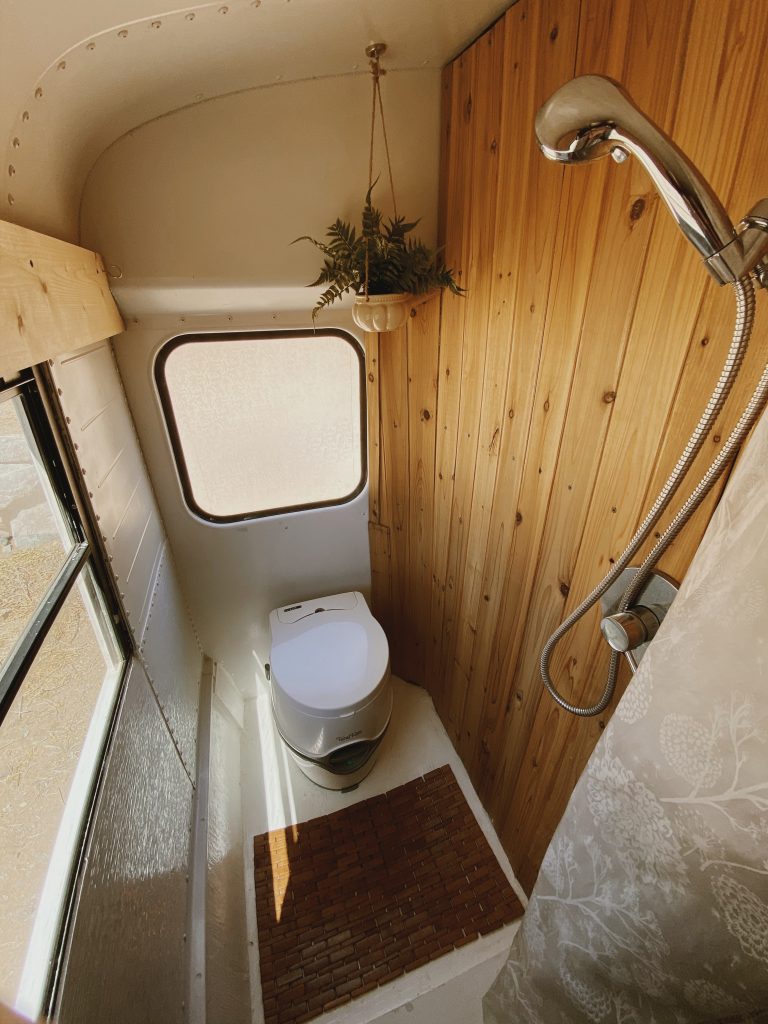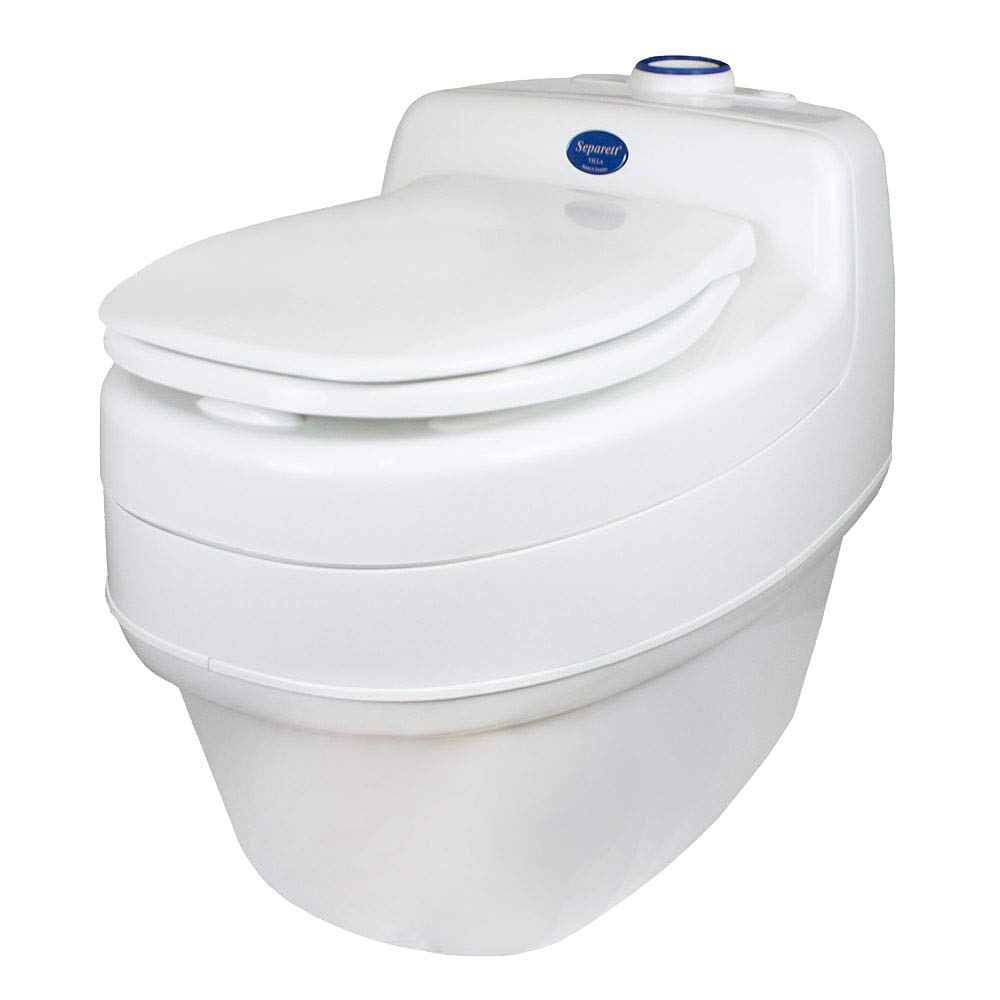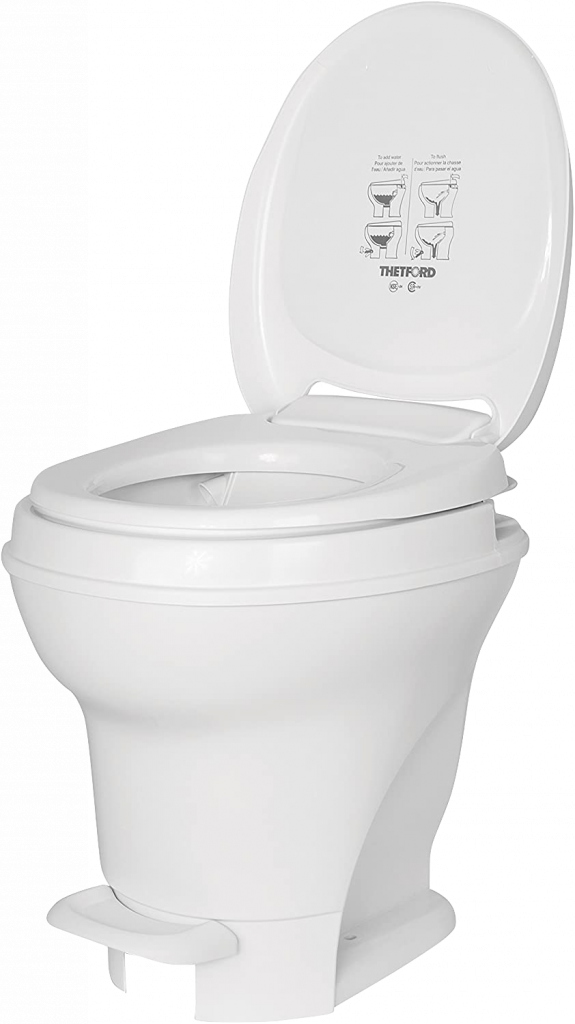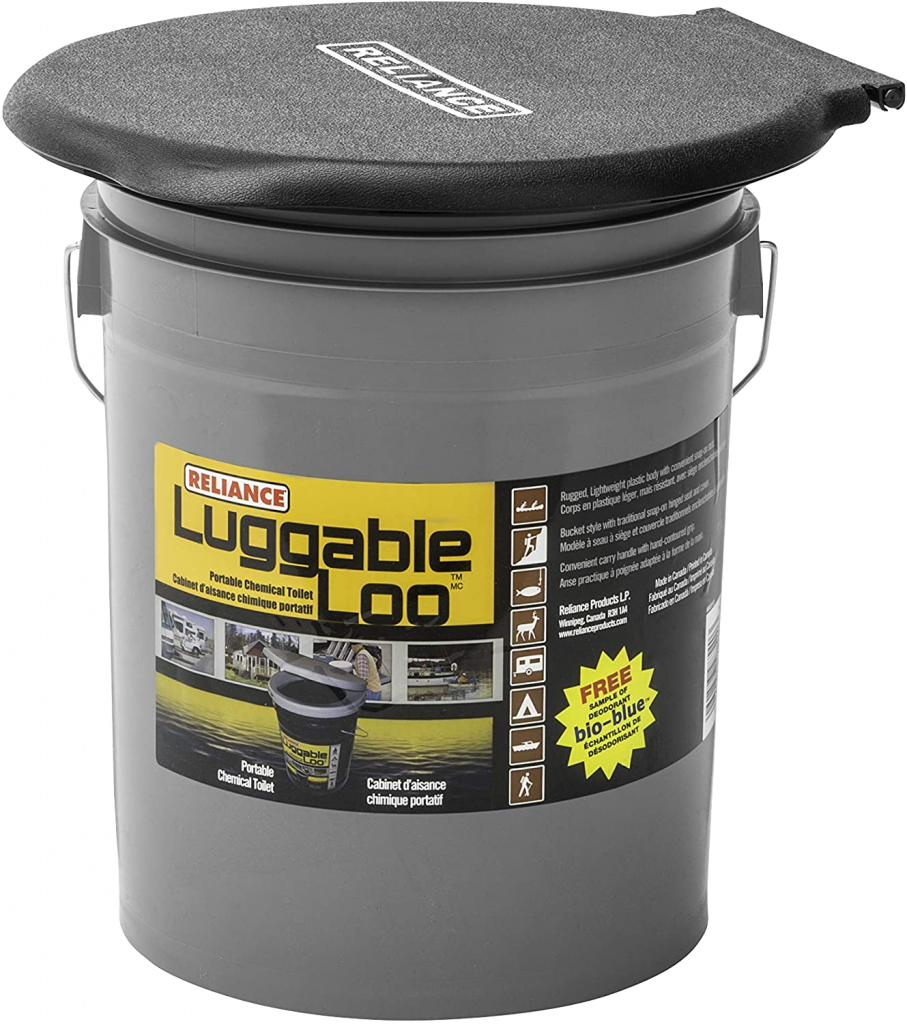Ah, the internet, a place where you can find unsolicited reviews of skoolie toilets from complete strangers. While a toilet might be the most exciting purchase you make for your bus or van conversion, it may be one of the most appreciated. We’ve rounded up our picks of the best toilets here (including the one on our skoolie) to help you answer the call of nature in a semi-civilized way.
What to Consider Before You Buy A Skoolie Toilet
Before you buy your skoolie toilet, there are a few things you want to consider first:
- Size: one of the main considerations for all skoolie and van purchases is space. Before you get too far into the shopping process, make sure you’ve got a solid idea of what your floor plan looks like, and how much physical space you have for your toilet.
- How many people: if you’re traveling solo, toilet capacity might not be an issue. But if you’re traveling with a family, capacity is more of an issue because it means more frequent waste dumping and planning.
- Ease of dumping: in addition to the capacity of the toilet (how frequently you need to dump), how difficult is it to dump the toilet out? Additionally, is your bus or van designed in such a way that it’s easy to carry waste out?
- Length and types of trips: do you need a toilet just for emergencies? Will you be staying at campgrounds or other areas with “normal” bathrooms? Or do you need a reliable off-grid option for frequent use?
- Smell: will the toilet be in an enclosed space, such as a bathroom on your bus? If you’re a vanlifer, smell might be more of a concern because your living area is not as separated from the toilet.
- Environmental factors: some toilets are more environmentally friendly than others, which we’ll see in a bit.
- Budget: no one wants to spend a ton of money on a toilet when there are much more fun things to buy for your bus… roof deck, anyone?! Some toilet options are (much!) pricier than others, so we’ve included different options for each budget.
Types of Skoolie Toilets
There are different options for installing a toilet in your converted bus.
Some toilets do not require any plumbing, including the composting toilets, portable toilets, and camping/emergency toilets listed in this post. If you don’t have space, time or budget for a big waste tank, this is a good option. You can also go this route if you want a quick toilet option now, with plans to upgrade later (this is what we’re doing with our skoolie).
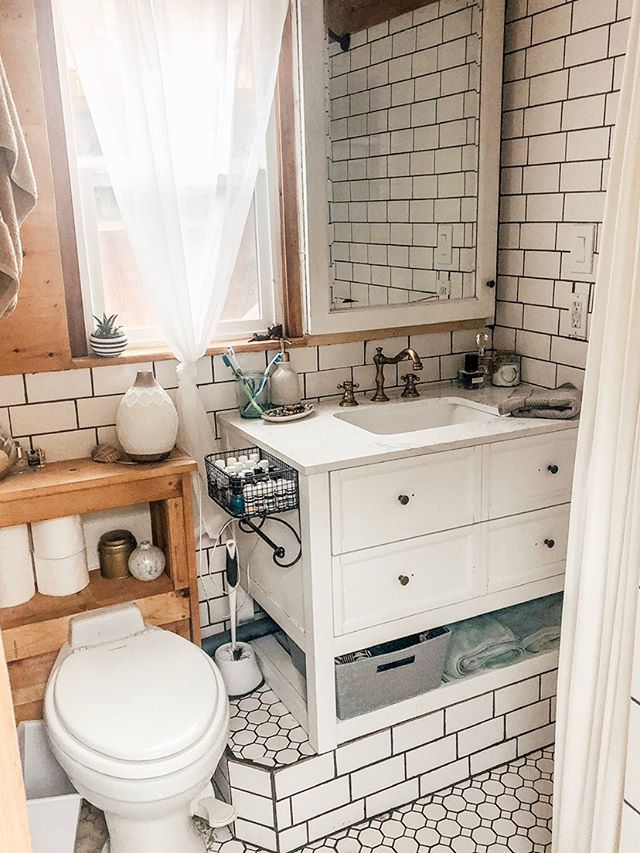
The other upside of these toilets are that they are typically lower in cost and space requirements. The downside is that you have to regularly carry the toilet (or part of the toilet) to dump the waste.
Permanent toilets, what you might imagine in an RV, require plumbing in the form of a “black water” tank, as well as fresh water tanks in some cases. This means additional cost and installation time, plus, you need to figure out where to install the tank(s). If you’re already tight on bus space, you might be able to mount the tank under the bus. You empty the tank less frequently, but since it’s installed into your bus, you need to find an RV-style dump site.

There are also incinerating toilets which light your poop on fire, but these are new enough that it’s hard to find information on how well suited they are for bus life.
How Do Composting Toilets Work?
Composting toilets separate liquids from solids so that the solids can dry out and later be used for composting. This usually works via the design of the toilet, which directs liquids into one tank and solids into another, where they can dry out.
As you can probably imagine, managing the evaporation and smell can be difficult. Composting toilets need to handle moisture levels and properly ventilate to manage smell and pathogens. This is why a lot of composting toilets are pricey.
They are much more environmentally friendly than the other options, even if you don’t actually use the compost. Other types of toilets shown in this post use a lot of water and/or chemicals to break down the waste and manage the smell.
Option #1: A Composting Toilet
If environmental friendliness and travel freedom are the highest priorities for you, consider getting a composting toilet. Because you aren’t adding chemicals, you are less limited on where you can dump your waste (who wants to plan their day or week around getting rid of their poo?)
As mentioned earlier, composting toilets are pricey because of the engineering that goes into them. Our pick is the Separett Villa 9215 AC/DC, which diverts liquids away from solids. This toilet has a fan that helps with odors. The reviews from Separatt owners back this up… “DOES NOT SMELL!”
It claim up to 3 weeks of family use before needing the solids dumped. You will need to plan out the fan installation and holding tank, but this is a solid waterless option. Be warned that it is on the shorter side at 18.75″ tall.
Another composting toilet option is the Nature’s Head Self Contained Composting Toilet. While they say it lasts 4-6 weeks between two people, many reviewers say they had to empty the urine bucket every 2-3 days (so non-ideal for big families). This option also includes a fan but the reviews stating “no order” also use saw dust or other odor-absorbing materials in addition to the fan.
Option #2: Portable Skoolie Toilets (Non-Composting)
This option is what we have in our skoolie. In particular, we have the Thetford Porta Potti 92305. It’s relatively affordable, easy to manage, it feels like a normal toilet, it’s easy to empty, and it doesn’t smell. It also has Ia display indicator that shows you what the waste levels are like so you know when you need to dump it. While we eventually plan to upgrade to a permanent installation, this is a good option for us and we could use this indefinitely without too many complaints.
These portable toilets are self-contained and have one holding tank (no separating liquids from solids) that need to be emptied when full. The other downside is that you need to use chemicals to help break down the waste. This limits where you can responsibly dump your waste and also is less environmentally friendly than a composting toilet option.
There are a number of options in this category but as already mentioned, the Thetford Porta Potti 92305 is the top pick in my opinion. We’ve been using it on our bus for the past 8 months with almost no complaints. The flushing handle is in an unintuitive spot, and you need batteries for the flushing mechanism, but other than that, we’re very happy with it.
This brand has a bunch of options that are all variations on this product. I chose the “Curve” option because it is taller and I don’t like low seats.
Option #3: Permanent Skoolie Toilet Installations
If you’re set on long-term skoolie living, this might be the option for you. A permanent toilet installation means that you have a toilet hooked up to a black water or waste tank. You then have to empty the tank when it is full.
This means you’re emptying much less frequently than the other skoolie toilet options, but you also need to find an RV hookup or similar dump site. This might require you to change your travel plans, such as placing time limits on how much time you can spend truly “off grid”.
This option is also more expensive, because you need to plan out the location and mounting of the tanks (one for water, one for waste), install the toilet, and then install the connection between the tanks and the toilet.
Our choice in this category is the Aqua-Magic V RV Toilet Pedal Flush. Pressing the pedal halfway adds water to the bowl, and pressing it down all the way flushes the toilet. You also get an option of toilet height. Add in the fact that you’ve got indoor plumbing, and this option will feel (almost) like a normal toilet.
Option #4: Budget Toilet (Camping or Emergency Toilets)
Lastly, we have the “Luggable Loo” as a surprisingly appealing budget option. No, your eyes are not deceiving you… someone is making an entire business out of a 5-gallon bucket with a toilet seat on top.
If the thought of having a 5-gallon bucket of human waste in your bus or van seems offensive, the Luggable Loo has two features to help manage that.
First, the toilet seat lid snaps closed, which helps manage the smell. Secondly, they recommend you line the toilet with a bag to expedite the dumping process. They have branded compostable bags but we don’t see why normal trash bags wouldn’t work in a pinch. You might want to consider adding some sawdust, peat, or other odor absorbing material if you’ll be using it frequently.
This is less environmentally friendly than the other options, although it requires a bit less messing around. The appearance of this option (since it’s a 5-gallon bucket with a lid) makes it less conspicuous to carry around. So, when it’s time to dump things out, it’s less obvious that you’re carrying your toilet around.
And, best of all, it’s only $20! There are other foldable or “emergency” toilets on Amazon but this seems to be the best in terms of sturdiness and cost.
Conclusion
Hopefully this post has been useful! Put some thought into your toilet research so that you can have a pleasant skoolie experience on all of your many travels.

